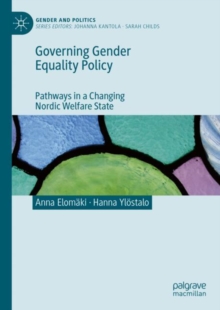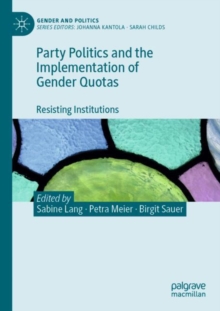
Description
While existing literature provides compelling evidence that women in public office make a difference, the relationship between descriptive and substantive representation of women in political institutions long the domain of men is neither simple nor certain.
Embracing New Institutionalists' warnings of the dangers of studying behaviour in an institutional vacuum, this book uses two strikingly different yet consecutive congresses - the Democratically controlled 103rdCongress elected during the 'Year of the Woman' and the Republican-controlled 104th Congress elected during the 'Year of the Angry White Male' - as laboratories to explore the complexity of the relationship between women's presence and impact.
In-depth interviews with hundreds of staff, lobbyists,and women members of Congress, along with other quantitative and archival data, are the foundation for case studies of three highly visible policy areas (reproductive rights, women's health, and health care policy) important to women, but with strikingly different outcomes across the two Congresses. The inquiry is quickly moved beyond the simple question 'Do women make a difference?' Dodson confronts the contested issues surrounding difference which often lurk beneath the surface - the probabilistic rather than deterministic relationship between descriptive and substantive representation of women, the contested legitimacy of women representing women, and the disagreement about what it means to represent women.
The analysis moves the literature toward a better integrated understanding ofhow gendered forces at the individual, institutional, and societal levels combine to reinforce and redefine gendered relationships to power in the public sphere.
The results can be generalized over time and across settings, are meaningful even in periods when the answer to the question of whetherwomen make a difference seems to be more frequently 'no' than 'yes,' and point to strategies that may bolster the impact of women's presence for substantive representation of women.
Information
-
Download - Immediately Available
- Format:PDF
- Publisher:OUP Oxford
- Publication Date:18/05/2006
- Category:
- ISBN:9780191522758
Information
-
Download - Immediately Available
- Format:PDF
- Publisher:OUP Oxford
- Publication Date:18/05/2006
- Category:
- ISBN:9780191522758










